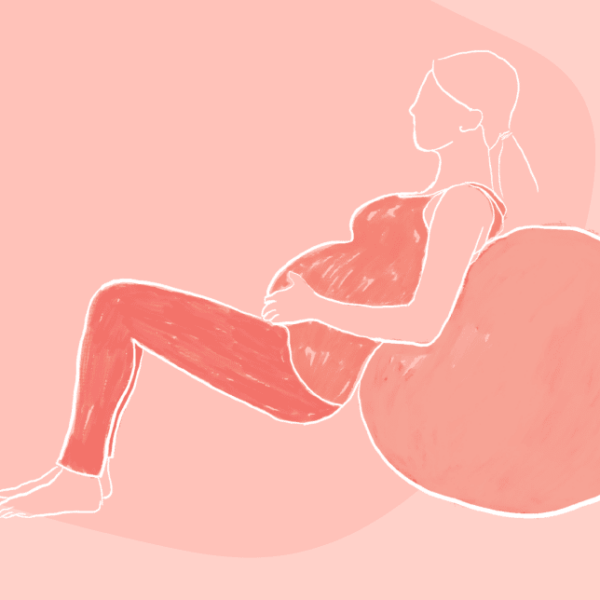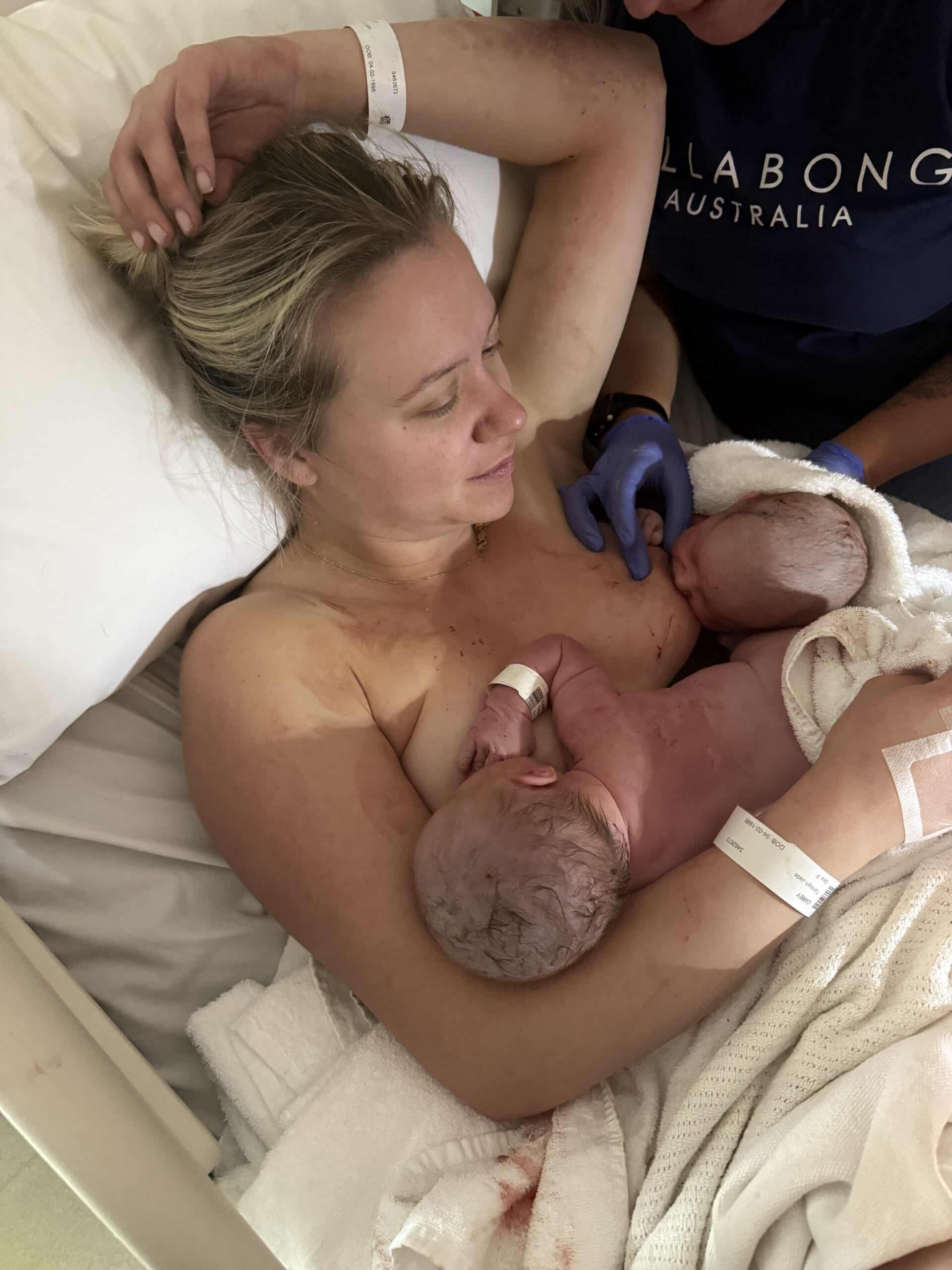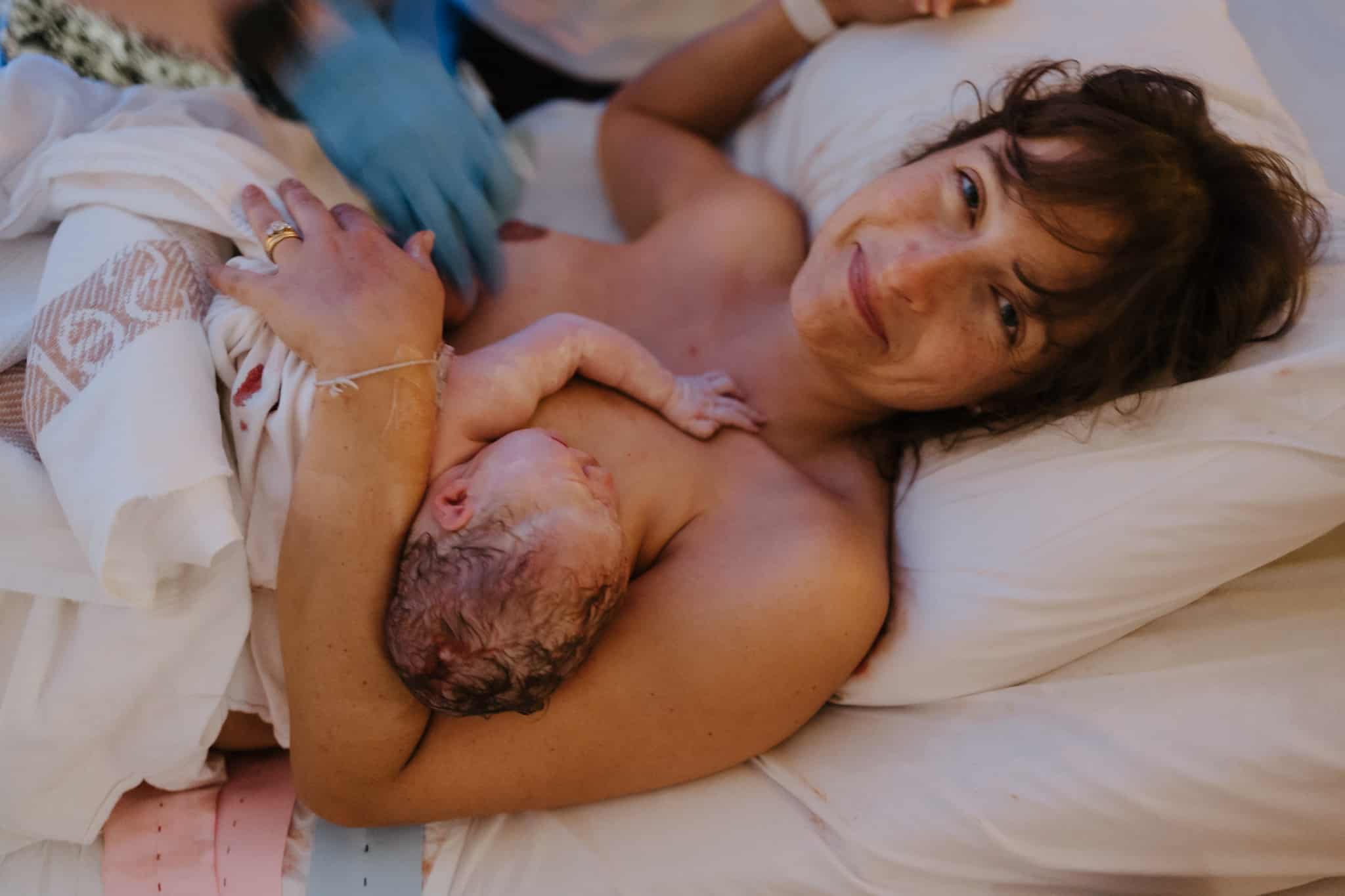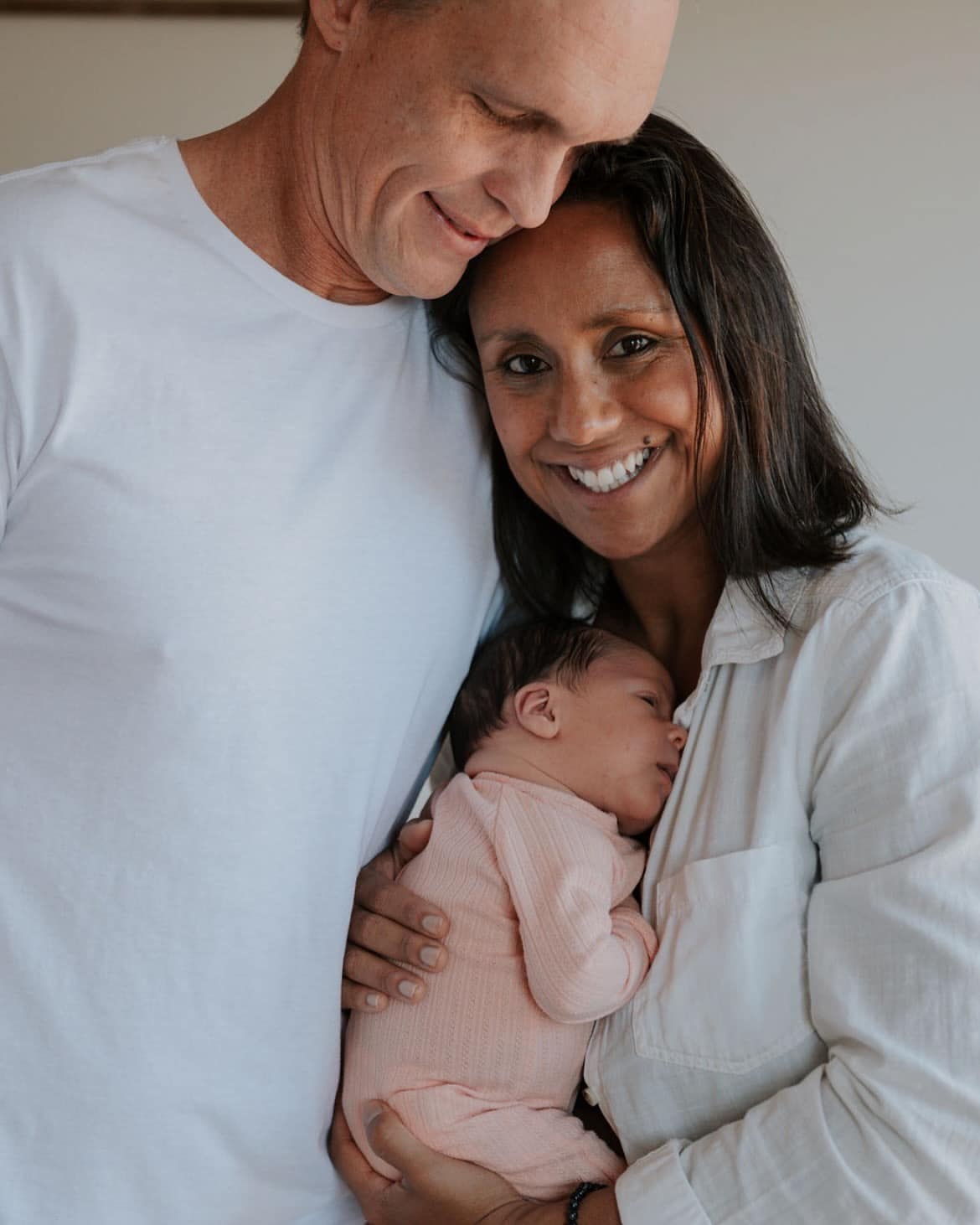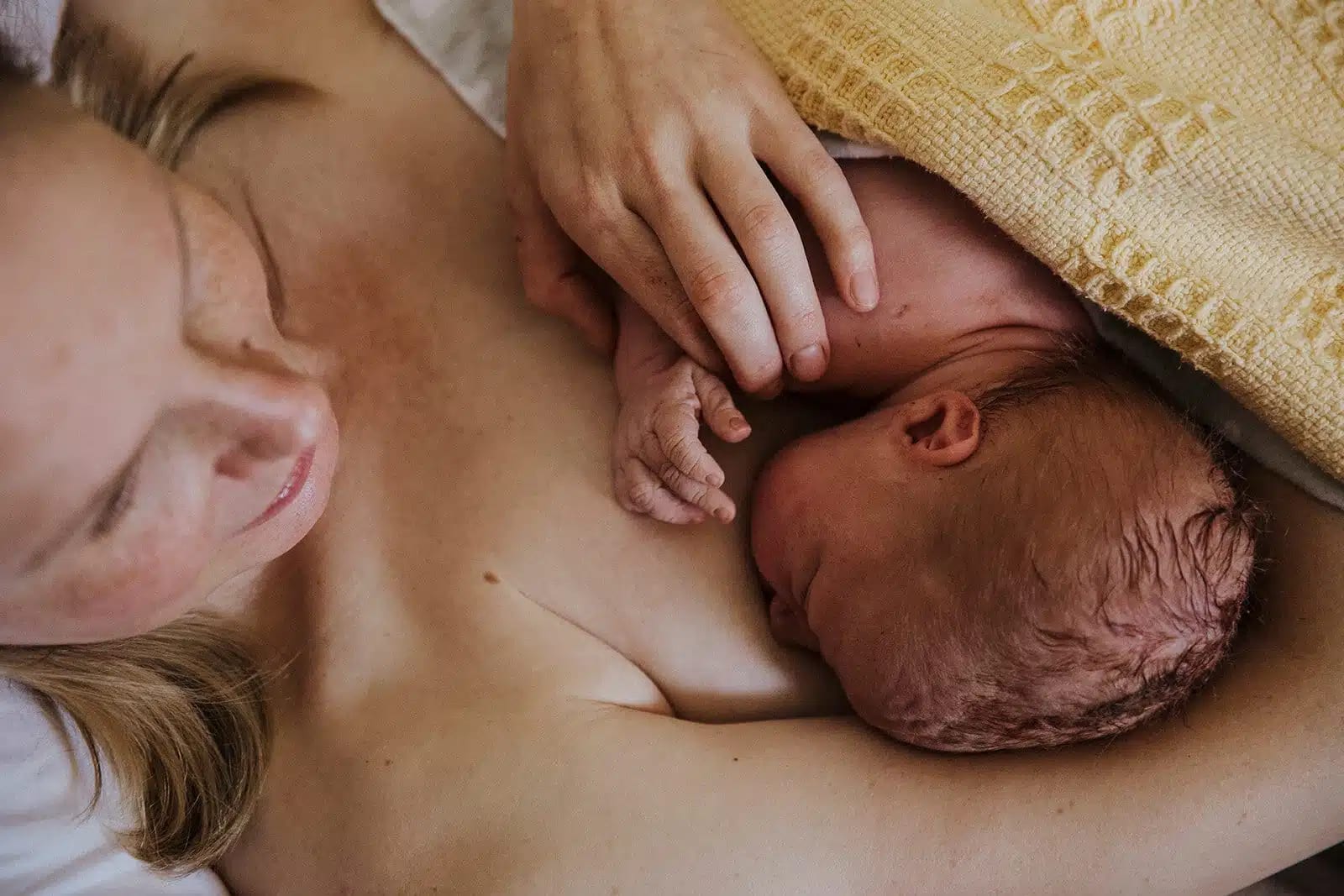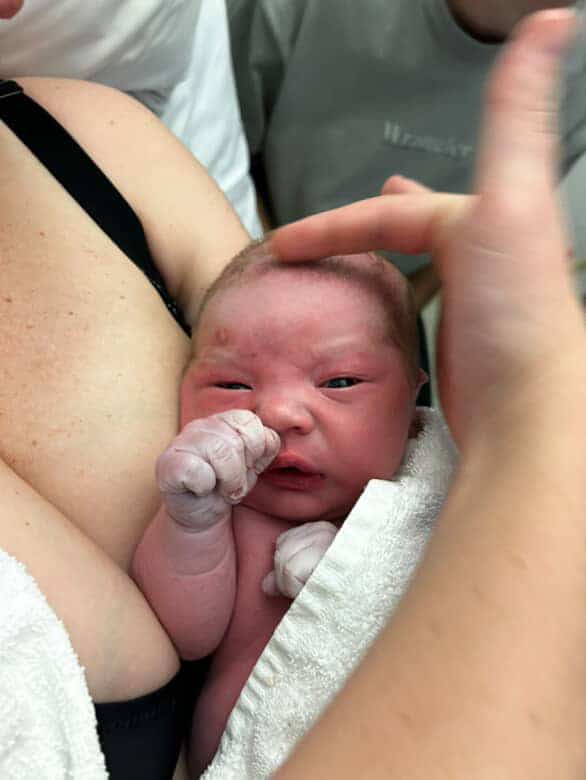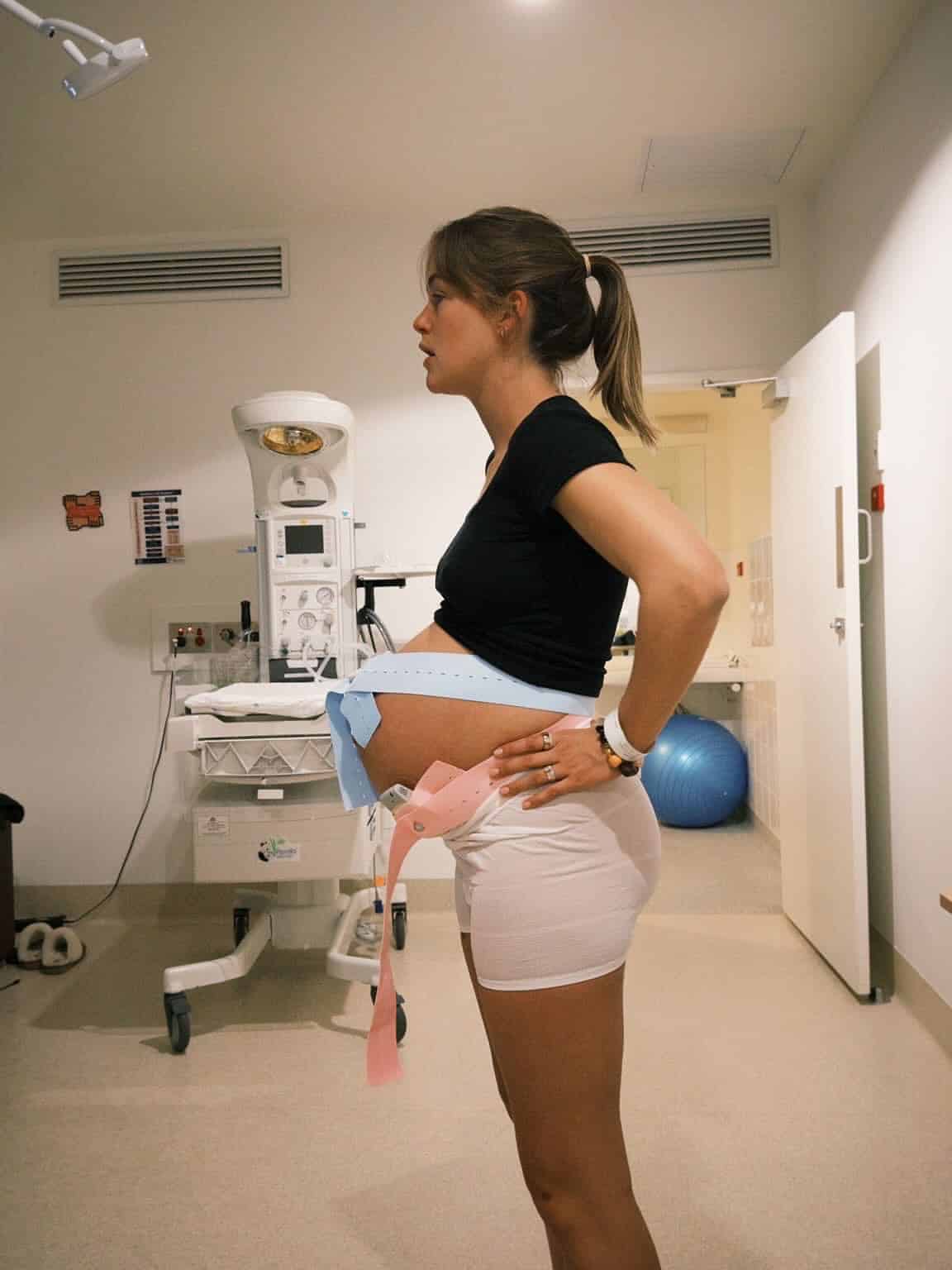Podcasts Tamsyn 2 Births, DCDA twins, vaginal twin birth, birth advocacy, midwifery support, physiological labour
EPISODE 570
Tamsyn 2 Births, DCDA twins, vaginal twin birth, birth advocacy, midwifery support, physiological labour
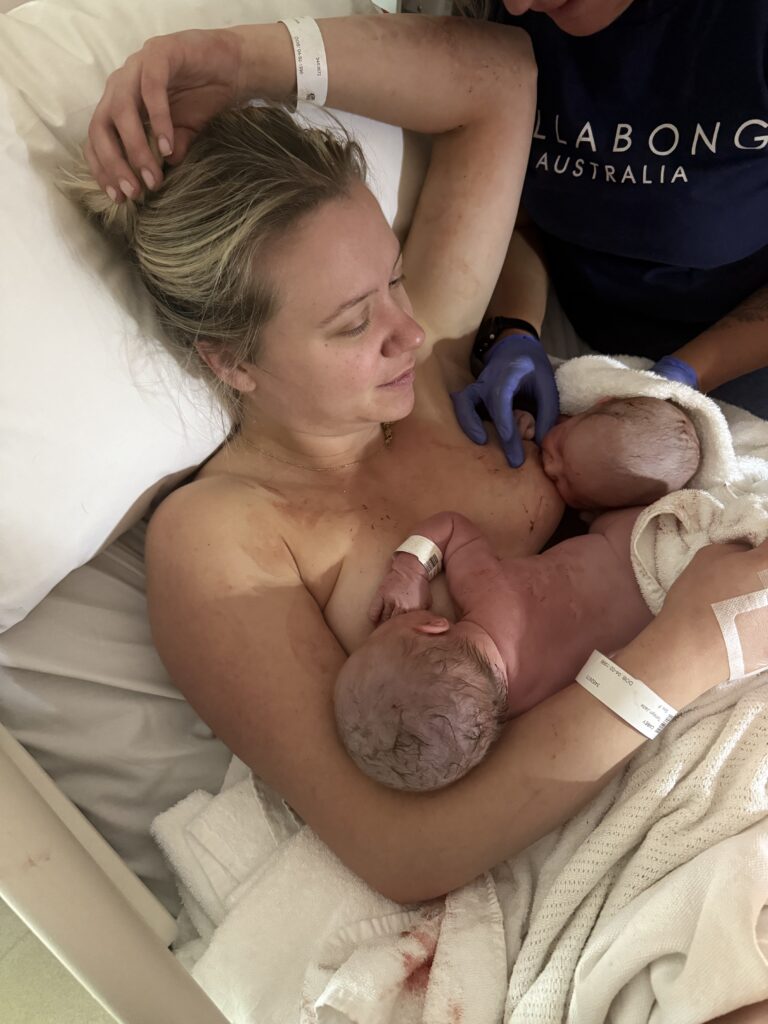
Tamsyn’s story begins in 2021 when she and her husband Dale, decided to start their family. “We tried one time and fell pregnant, which was really lucky,” Tamsyn recalls of conceiving Maya. However, her pregnancy coincided with Melbourne’s COVID lockdowns, creating additional stress and restrictions around her care.
Working as a carpenter throughout most of her first pregnancy, Tamsyn chose shared care with Dr Anna Jackson at Tye Road Medical Centre. “She’s incredible,” Tamsyn reflects. “She was direct and considerate and had a great midwife on staff.” However, it was through Dale’s stepsister that Tamsyn was gifted birth education classes with private midwife Helen from Eastside Midwives – a connection that would prove invaluable for both pregnancies.
“The first thing that she said to me was ‘did you know that when you walk into a hospital, you have the right to say no?’ And I was like, what do you mean? It’s a hospital, you go there for help, you go there for medical reasons. And yeah, that was just like a bit of a turning point in the way that I viewed everything.”
Navigating Care
Throughout Maya’s pregnancy, Tamsyn faced significant pressure from hospital staff. Suspected of carrying a small baby based on growth scans, she was offered a induction at 38 weeks. “I had an obstetrician tell me, because she’s a small baby, that means your placenta’s probably not working like how it should be. And stillbirth,” Tamsyn remembers of the fear-based language used.
With Helen’s support, Tamsyn declined the induction and waited for spontaneous labour. “I ended up just waiting it out. I stuck to my guns and I ended up actually going nearly 42 weeks over, so it was almost another month from being told that I had to be induced.”
Maya’s birth began with spontaneous labour at 41+5 weeks. After labouring at home for most of the day, Tamsyn experienced intense back labour. “I had full back labour, so for both of my pregnancies, for both of my labours, I spent the entire time standing up apart from little bits here and there because I couldn’t sit down.”
Despite her birth plan requesting no pain relief offers, the first thing hospital staff did was offer medication. “The first thing that they did was offer me pain medication, even though I said not to, and I said no. And then Dale parked in and he was like, ‘she’s not having any pain relief. That’s not what she wants.'”
Tamsyn found relief through sterile water injections for her back labour: “They are so painful, but so, so worth it. The back labour just blurred out and I was able to continue labouring.”
When Maya’s heart rate began dropping during pushing, medical staff intervened with an episiotomy. “I’ll never forget the sound of the episiotomy being cut. It sounds like felt being cut,” Tamsyn recalls. “One of the midwives started cutting the episiotomy and freaked out and said to the midwife next to her, ‘oh you do it.'”
Maya was born weighing 3.4kg – not the small baby predicted by scans. During placental inspection, they discovered a rare velamentous cord insertion. “The midwife asked if I wanted to inspect it, and when she lifted up the umbilical cord, she gasped. I had a really obvious velamentous cord insertion… I got told that if they had broken my waters, it could have really quickly ended in an emergency caesarean.”
Preparing for Twins
Three years later, when Tamsyn conceived again, she discovered at her eight-week scan that she was carrying twins. “I looked up at the screen and she goes, ‘oh, there’s two.’ And I said, ‘yep.’ And I put my hands over my head and Dale jumped up and then quickly looked at me and was like, ‘oh shit.'”
The first emotion Tamsyn felt was concern: “The first thing that came to my head was, oh no, I’m high risk now. I just imagined going through everything I went through in Maya’s pregnancy, having all those scans and all the pressure.”
At 12 weeks, they learned they were having fraternal twins, which reduced some risks. However, Tamsyn’s hopes for a natural birth were immediately challenged. Her first appointment with a midwife was encouraging: “She painted this picture for me that everything I wanted to do would be possible. And I told her, maybe I could have a twin water birth. I’d seen that on your podcast.”
However, her next appointment with an obstetrician shattered these hopes: “She just invalidated everything that I said and everything that I wanted, and told me that it was basically impossible to have a twin water birth, and it wouldn’t be done at Eastern Health… She basically explained that when you come in, you’ll be having an epidural, you’ll be induced at 37 and a half weeks.”
Helen once again provided crucial support: “She just completely brought me back down to earth and was like, ‘look, you’re gonna feel the need to fight along this journey with words. But they don’t matter at the moment. You don’t have to say yes to anything… All that matters is when you walk in the doors, you birth your babies.'”
Throughout her twin pregnancy, Tamsyn faced consistent pressure to accept interventions. At 37 weeks, she was offered induction but declined. “I had a really lovely clinician on and she basically offered me an induction and I said no. And she just explained everything to me and all of the risks and that was fine.”
However, her final appointment at 40+6 weeks was traumatic. The obstetrician was immediately hostile: “I didn’t even get a hello. I had a chai latte in my hand and I popped it down on the table… the doctor looked at me, looked at my cup, and all she said to me was, ‘don’t you know you’re not meant to be drinking coffee before a blood pressure test?'”
The appointment continued poorly: “She didn’t ask permission to check my blood pressure. She didn’t even introduce herself… instead of holding her fingers to do the fundal measurement, she actually drew a dot on my tummy and didn’t even ask.”
The Twin Birth
That same night, Tamsyn went into spontaneous labour at 40+6 weeks. “I woke up at around 11 to Maya waking up and I went and laid in bed and I was like, ‘wow, I think I actually think I’m in labour.'”
Labour progressed rapidly. By 2am, contractions were intensifying, and by 4am, both Shelly and her best friend had arrived. “My waters broke slightly and contractions started getting back to back… they were about two to three minutes apart.”
When Tamsyn felt the urge to push, they headed to hospital, arriving at 6am. Tamsyn was greeted by midwife Catherine: “She said, ‘hi, I am Catherine.’ And just straight away she was like, ‘you’ve got this, Tamsyn, work through it. Trust your body.’ And it was just so beautiful because she just continued that throughout my whole labour.”
The birth progressed incredibly quickly. Within 20 minutes of arrival, Catherine suggested it was time to prepare for birth. “I was like, ‘wait, what?’ In my head I was in disbelief… I’d only been there for 20 minutes and she was like, ‘all right, I think it’s time to take your pants off.'”
When Ricky’s heart rate dropped during pushing, Catherine advocated for Tamsyn: “I can actually hear her chatting to the doctor and asking the doctor what she’s comfortable with, meaning like, ‘are you comfortable with letting Tamsyn have another contraction just to see?’ And it’s just so nice hearing that because I know that she really wanted me to be able to do this.”
Ricky was born first after Tamsyn flipped from all fours to her back: “As I flipped over, all of a sudden… these really strong contractions and he started making his way out… I pushed him out and I caught him.”
Just 10 minutes later, Miley followed: “I had a couple of back to back contractions and I was involuntarily pushing again whilst holding Ricky… she started coming out in her sac… it was like one contraction and one push. And she just came out, her sac broke as she came out, and they pulled her onto my chest and I had both of them there.”
The twins weighed 3.55kg (Ricky) and 3.33kg (Miley) – healthy weights that contradicted earlier concerns about size.
Reflecting on the experience, Tamsyn felt incredibly empowered: “It couldn’t have gone any better. We were all so happy… I just remember looking up, holding both my babies and I could just see all of the doctors smiling. Everyone was smiling and everyone was just so obviously happy that no one had to intervene.”
Catherine later thanked Tamsyn, calling it “one of her career highlights.” The midwife even returned for her night shift to care for the twins, having a beautiful conversation with Tamsyn about the birth.
Now exclusively breastfeeding both twins through tandem feeding, Tamsyn reflects on her postpartum experience: “My postpartum has been nothing short of amazing. It is so hard, especially with Maya and adjusting to having three children. But Dale is the most incredible husband… I don’t have a village. I have literally a whole country looking after me.”
Key Takeaways
Tamsyn’s story powerfully demonstrates several important points for expectant mothers:
- The importance of having strong support people who understand your wishes
- That you have the right to decline interventions and seek second opinions
- The value of continuity of care with trusted providers
- That twin births can be physiological and empowering
- The impact of positive, woman-centred language from care providers
“I do hope that telling the story encourages women to know that you don’t have to make decisions on the spot when you are in an antenatal appointment. You can actually go home and think about it and you can ask other people. And you can always have someone there.”
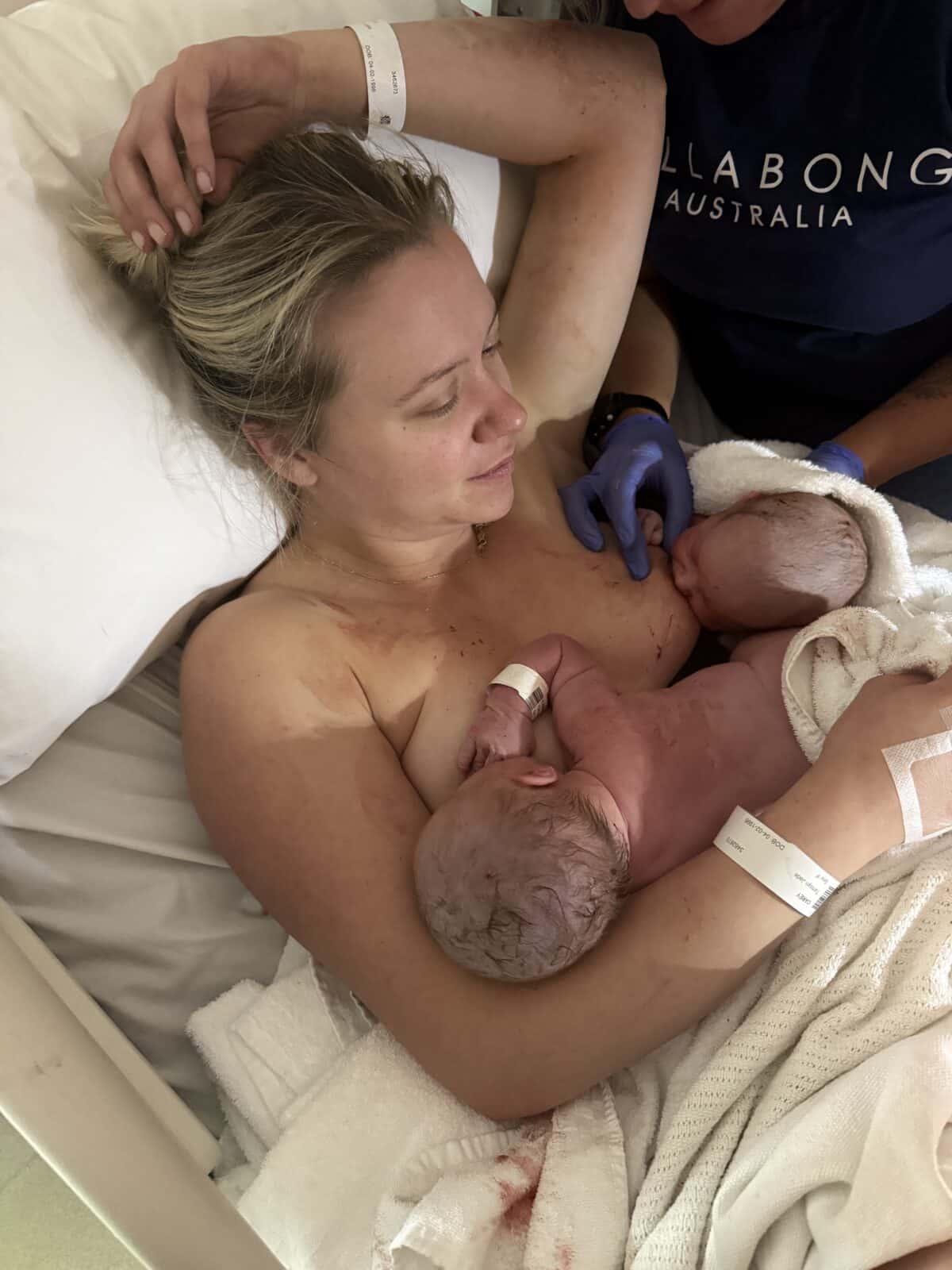
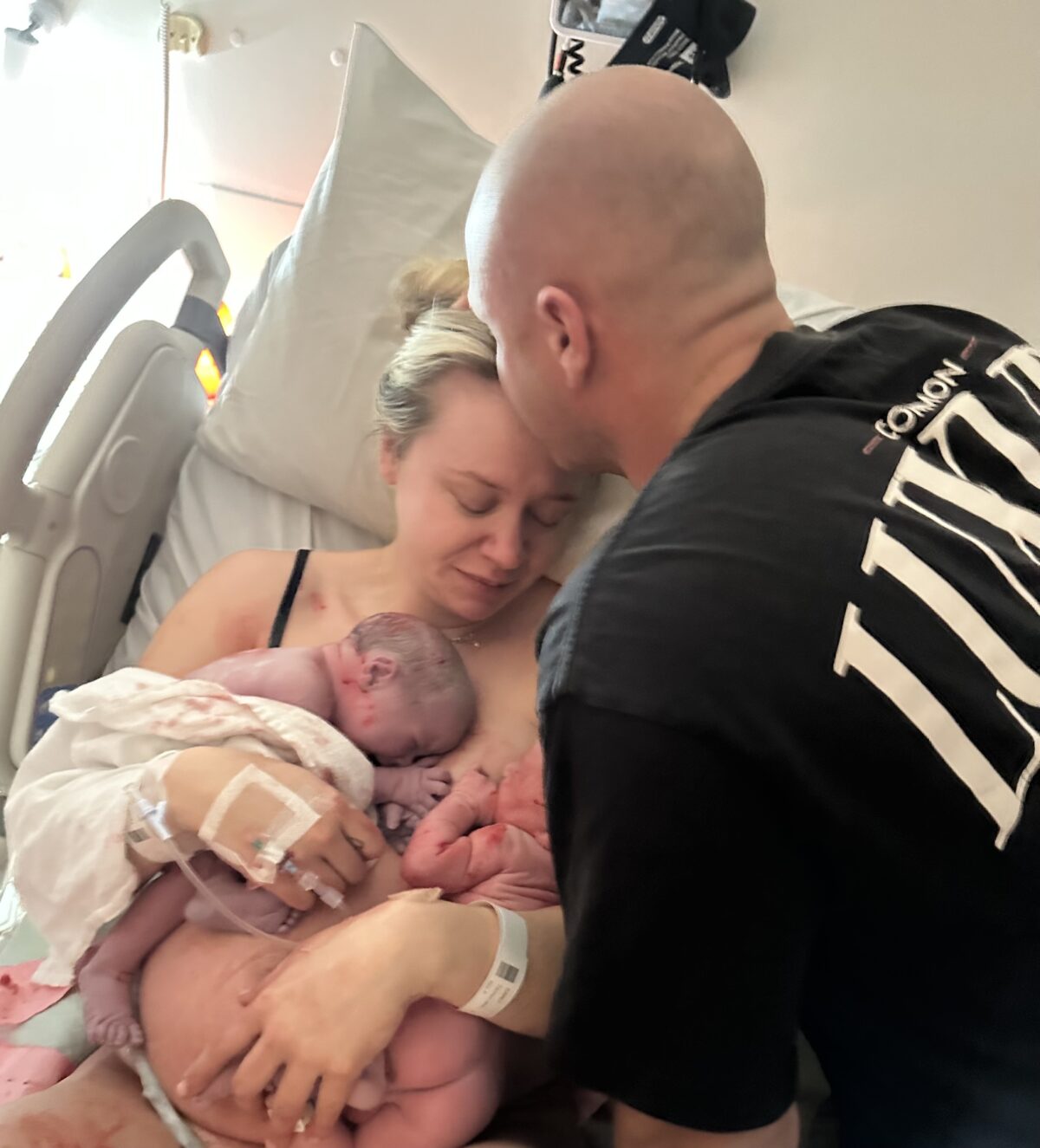
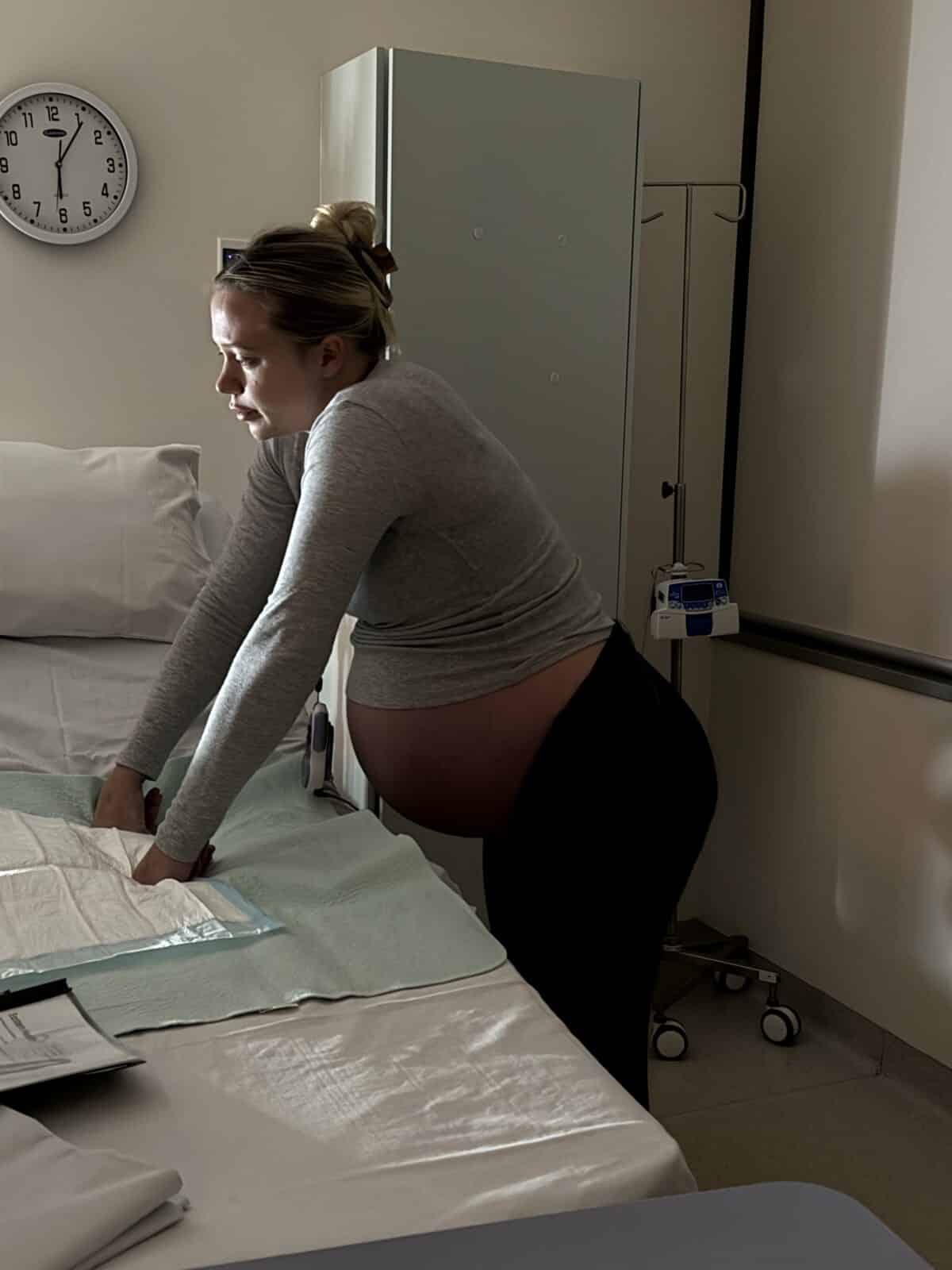
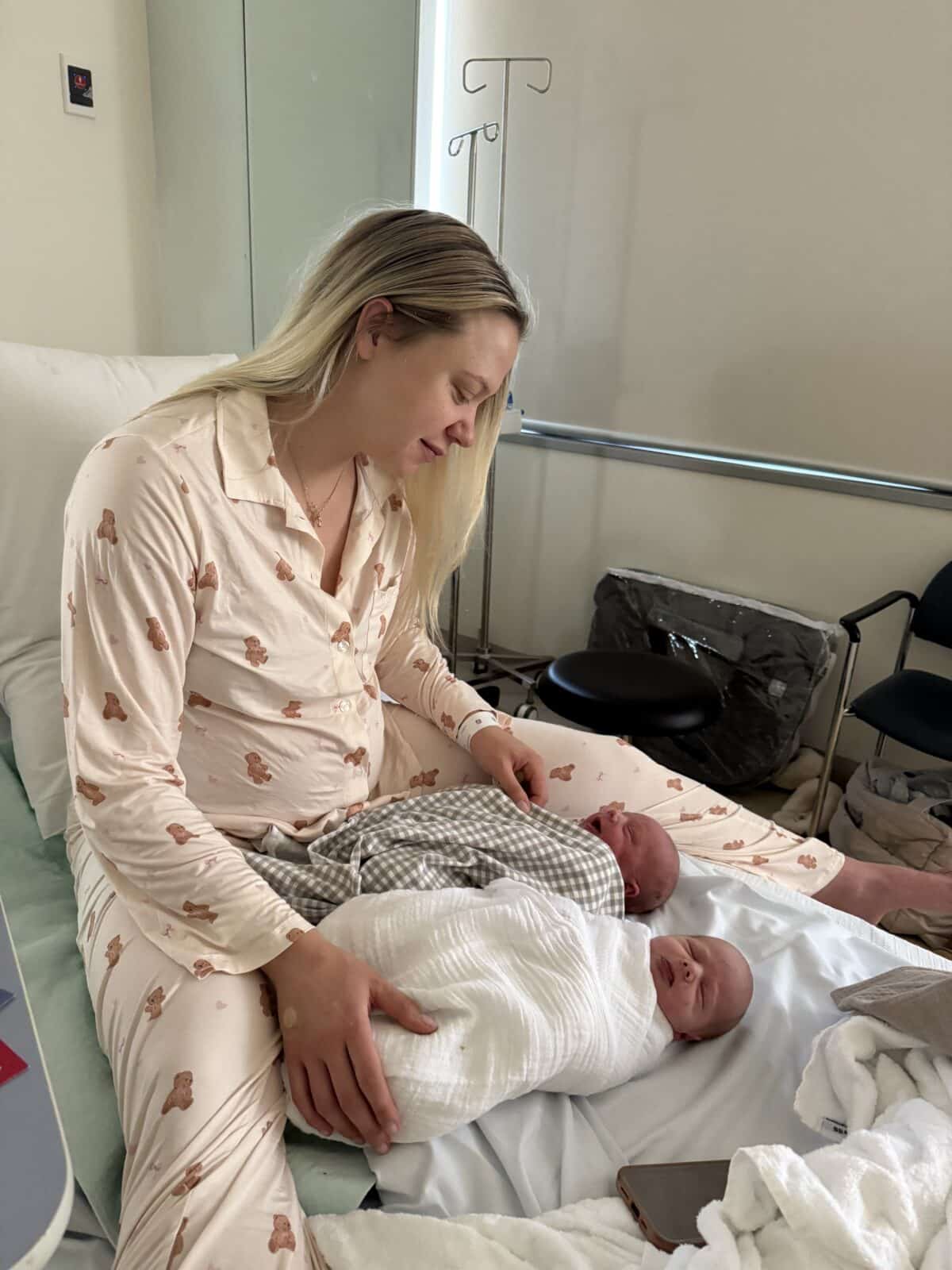
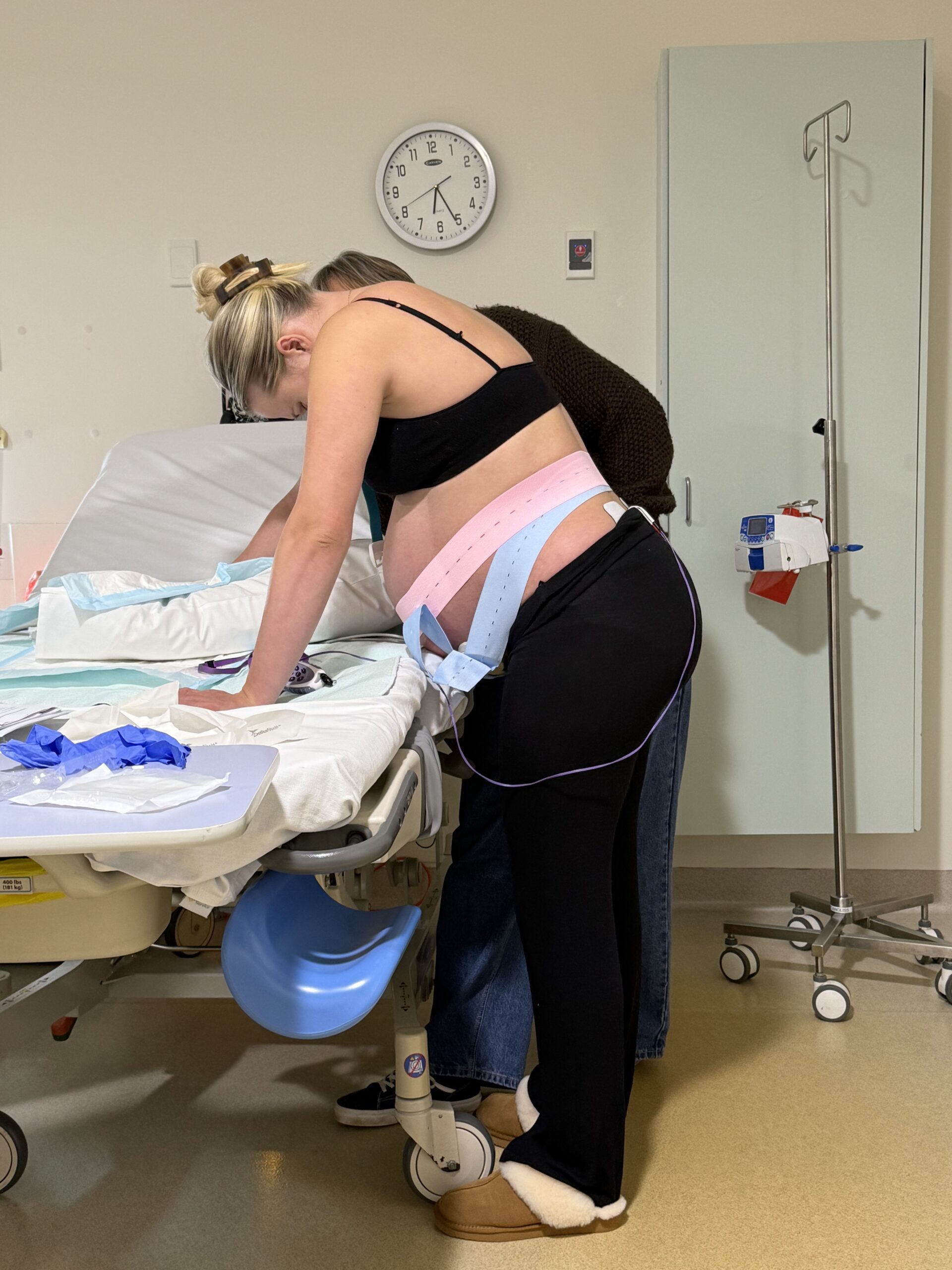
Episode Sponsor
Categories
Related Products
-
The Birth Class
108 reviews$249.00The empowering online childbirth education program that will help you confidently prepare for birth.
Join the conversation
Sign up to get the latest updates, freebies, podcast releases straight into your inbox
@AustralianBirthStories
Follow along with us
@AustralianBirthStories
Follow along with us
@AustralianBirthStories
Follow along with us
@AustralianBirthStories
Follow along with us
@AustralianBirthStories
Follow along with us
@AustralianBirthStories
Follow along with us
@AustralianBirthStories
Follow along with us
@AustralianBirthStories
Follow along with us
@AustralianBirthStories
Follow along with us
@AustralianBirthStories
Follow along with us
@AustralianBirthStories
Follow along with us
@AustralianBirthStories
Follow along with us
